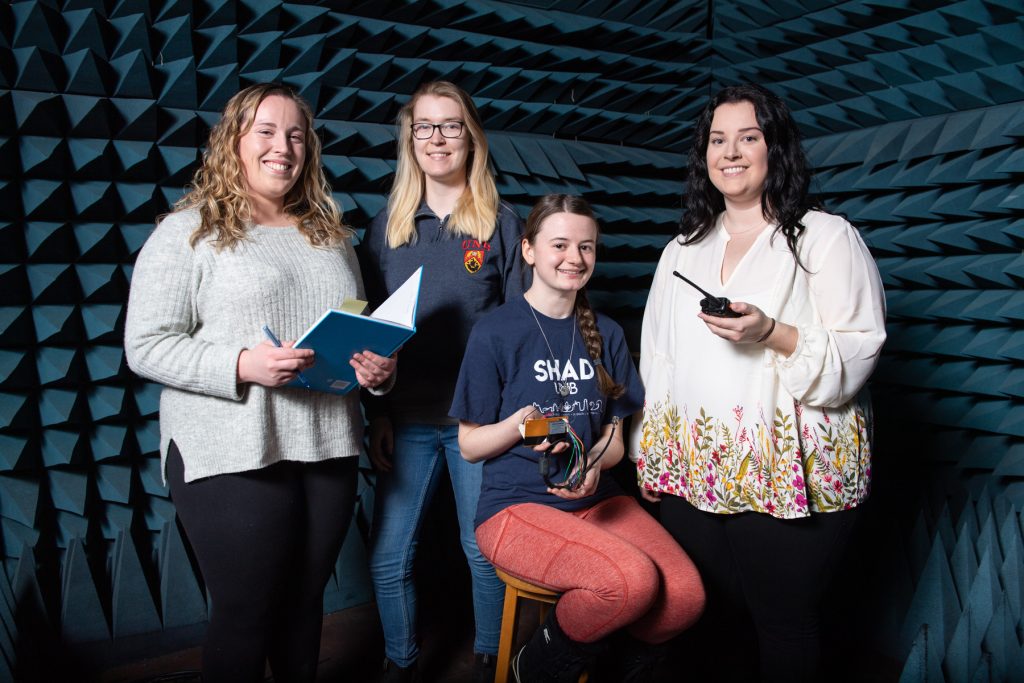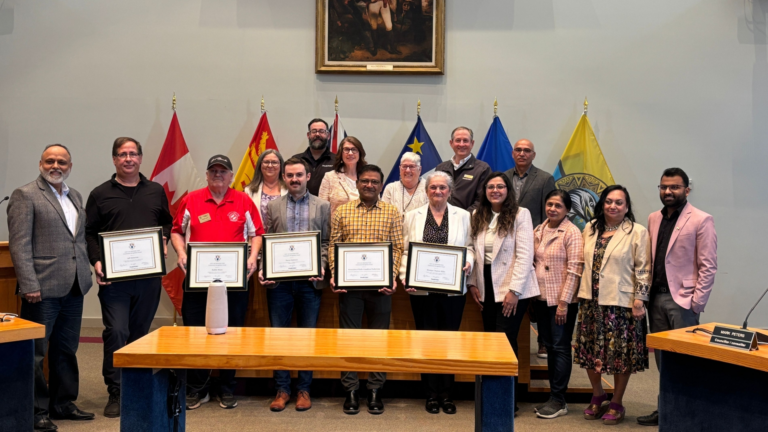A group of four University of New Brunswick engineering students have developed a marine life jacket with a tracking system they believe could be saving lives by next year.
Bridget McCloskey, Kaitlin MacIsaac, Phoenix Bard-Cavers and Amy Andrews formed a multi-disciplinary group and centered their product around what the Globe & Mail called one of Canada’s most dangerous jobs: fishing.
All four students come from coastal communities where the fishing industry is prevalent.
After the group saw an article in the Globe & Mail about the dangers of fishing, they decided to engineer a product in the hope of making their communities safer.
The Technology Management and Entrepreneurship program’s brand design class requires students to form groups, design a product and create a company to market the product. Students from different branches of engineering may work together on the project, making it a unique opportunity to bridge the gaps between different engineering disciplines.
“Engineering is not just science, it’s applied science,” said Michel Couturier, the assistant dean of engineering. “It’s using things discovered by scientists to make the world better.”
That is exactly what McCloskey and her classmates have set out to do.
“We started looking at the marine industries to see if there were any problems we could solve,” McCloskey said.
McCloskey and the rest of the group, whose company is called LifeTrack, decided to develop a lifejacket. She explained that while there are already lifejackets on the market, and they are mandatory to wear on fishing boats in Canada, many fisherman do not actually wear them because they are too bulky and interfere with work.
“Our design was based on interviews with industry professionals and with the safety association who audit lifejackets on fishing boats in Nova Scotia,” she said.
A common concern expressed by those interviewed was recovery-rates. Even fisherman who wear lifejackets regularly can become lost in the water after falling in, making it difficult for a rescue to occur in time to save their life. This is what makes LifeTrack different.
“When it’s out of the water, it looks like a tight vest,” McCloskey said, describing LifeTrack’s first product, the Outlast lifejacket. Each Outlast jacket features a tracking device; this tracking ability, combined with the thin inflate-on-contact design of the lifejacket itself, is what makes the product unique from others on the market.
The Outlast is still in the design phase, but the group hopes to have the product ready for next year to present to the fishing community. They expect it to considerably improve the day-to-day safety of those working in the fishing industry.




